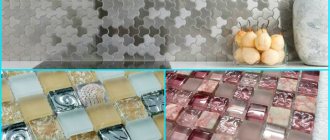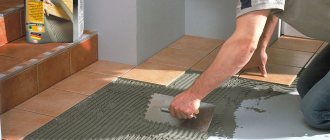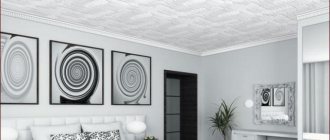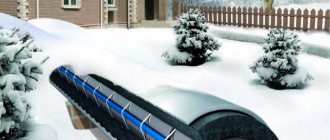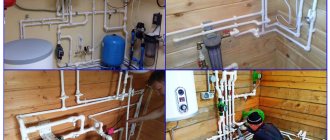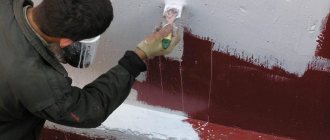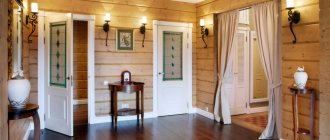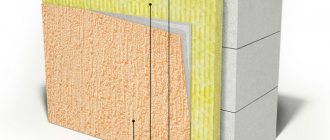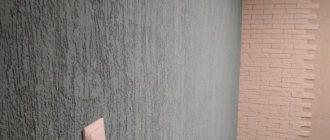- General information >>
- Benefits >>
- Scandinavian wind protection Isoplat (for external cladding) >>
- Universal plate Isoplat tongue and groove (for external and internal cladding) >>
- Heat and sound insulation board (for interior decoration) >>
- Underlay (for flooring under laminate, parquet, etc.)
- Sound insulation ISOPLAAT MasterECO+ Heat >>
General information about Izoplat slabs
ISOPLAAT is a brand of the largest Scandinavian concern SKANO FIBREBOARD, a manufacturer of fiberboards under the following brands: ISOPLAAT, RUNKOLEIJONA, TUULILEIJONA, LATTIALEIJONA.
ISOPLAAT (IZOPLAT) are soft open diffusion wood fiber boards, manufactured by the “wet method” without the addition of glue and other chemical binders. Only coniferous wood, rich in lignin, is used as raw material.
During the production process, wood chips are ground to a fiber state, moistened in a water or water-paraffin bath, then the resulting mass is laid out in the form of a “carpet” and fed under a hot press, where lignin “glues” wood fibers together. After forming, the slabs enter a hot drying chamber. No chemical binders, glue or resins are added to the composition. The slab turns out to be dense enough to serve as sheathing or a base for wallpaper, and at the same time porous enough to insulate at the level of the best thermal insulation materials and effectively reduce airborne and impact noise independently and/or in frame and frameless structures. Coniferous wood fibers have the ability to accumulate large amounts of heat (a natural battery) and regulate humidity in the room, which creates the “wooden house effect”, a favorable atmosphere and a feeling of comfort.
Manufacturing technology
The production of ISOPLAAT material consists of several stages:
- Selected softwood raw materials are crushed to produce wood chips.
- The chips are treated with water steam and completely saturated with moisture under a pressure of 0.8 - 1.0 MPa.
- There are types of products that go through another stage of additional grinding.
- Wood fiber is diluted with water up to 98% and, using special equipment, a fiber carpet is formed.
- The compressed slab is cut into separate pieces of the required size.
- The sheets are dehydrated in the dryer at temperatures up to 160°C.
- After drying, the panels can be cut to the size required by the consumer, they are assembled and packaged.
Scandinavian wind protection Isoplat
The Finns, experts in the field of frame house construction, choose windproof boards made without glue in the “wet process”, as they withstand the colder Scandinavian winters and have stood the test of time. When choosing building materials, you should trust the experience of our neighbors, because we have the same cold and humid climate. Thickness 12, 18 and 25 mm. Sheet format 2700x1200 mm. The edge is straight.
Find out the price >>
Isoplat windproof boards are impregnated with paraffin to protect against atmospheric moisture. Each wood hair is covered with a thin film. The stove can be installed with either side facing outwards. The ends of the slab do not need to be additionally protected from moisture. Paraffin is transparent.
REFERENCE
The green color is not an impregnation, but an ink for marking purposes only.
It combines a whole range of functions: wind protection and vapor permeability, thermal insulation and sound insulation, heat accumulation and protection from summer heat, open diffusion, additional rigidity for the frame, elastic base for plaster.
Frame house wall
Scheme of a Finnish frame house
Construction of the external walls of a frame house
As the outer cladding of the walls of a frame house, in place of the windproof layer in a multi-layer frame structure under a ventilated facade (blockhouse, Finnish lining, etc.). Additionally, the wooden frame posts are insulated. To perform such tasks, a 12 mm thick plate is suitable.
The 25 mm thick plate gives the structure additional rigidity and effectively insulates not only the racks, but also the entire enclosing structure. It is used when the task is to build an energy-efficient house. Replaces cross-insulation. Replaces the so-called classic Western European scheme: windproof film + OSB + polystyrene foam.
Also, a 25 mm thick slab is suitable for facade plaster, for example BAUMIT StarContact.
Isoplat can serve as external insulation for a wooden house. Wooden walls receive homogeneous thermal insulation and airtight wind protection without the need to install sheathing. No vapor barrier required. The effect of a wooden house is preserved.
And also as external insulation for a stone house made of brick, aerated concrete, etc. The vapor permeability of the walls is maintained. A more subtle solution.
The absence of glue and synthetic resins is a distinctive feature, due to which Isoplat does not delaminate when moistened in cold climates and retains its properties. Has excellent vapor permeability. In winter, when water vapor passes through the slab, the fibers become partially wet and slightly expand. If the fibers were rigidly bound with glue or resin, then when the fibers expanded, micro-fractures would occur, since the adhesive resin does not change its rigid bonds. Such risks may occur, for example, with boards made with dry process adhesive, which are intended for the milder climate of central Europe. When using Izoplat windproof boards, there is no risk of rupture of the windproof layer (as when using films), subsidence of insulation and mold formation.
House covered with Isoplat
Windproof film breaks
Basalt windbreak after a storm
Mold on OSB
Reviews
Isoplat is considered a new and promising material in the domestic building materials market. It is interesting to read reviews from consumers who have tried this product.
Here is a review from one construction company that started its business in Finland.
Our company has been operating since 1992 and specializes in the construction of houses made of timber. At that time, our construction was under the supervision of the local construction municipality in Finland, without whose approval no action was possible. In those years, Russian houses were built according to the principle: timber was laid, the top was lined with clapboards and that’s it. We, accordingly, worked using the same technology. Upon completion of all the work, the curator told us that it was necessary to have windproof slabs, which we had never even heard of.
We purchased this material at a local hardware store, dismantled the paneling and began lathing. At that moment we realized the importance of this material. When returning home, we decided to use the same technology and purchase these slabs from Finland. Until in 2005, these slabs appeared at the St. Petersburg company Ecoplat.
We made our choice in favor of the environmentally friendly and durable heat-insulating material isoplats, designed specifically for the humid northern climate. Moreover, it is easy to work with.
Anton, St. Petersburg
When renovating the apartment I used isoplat slabs. I decided to use them because of the problem of cold walls, which also let noise through. After installing this insulation, the noise from the street became virtually inaudible, and the apartment became warmer. At the moment everything is fine.
Pavel, Moscow
I used isoplat to insulate a private house. What can I say about this insulation - it’s just super. It is easy to work with and is attached with ordinary nails. I've been through the winter for three years now without any problems. It became comfortable and warm inside. I recommend.
Maxim, Chelyabinsk
I personally didn't like this material. I got the impression that it was made from wood waste, which was compressed and presented as a miracle insulation. I used them in one room and saw no results. All rooms remained at the same temperature without changes. Disappointed, do not recommend.
Pavel, Vladivostok
I decided to try isoplat because there were problems with heat retention and the walls were freezing. Used for exterior cladding of a house. My expectations were not met; in severe frosts the house still froze, and drops were even visible on the ceiling due to condensation. I regretted choosing this insulation.
Alexander, Naberezhnye Chelny
I saw Izoplat by chance in a hardware store and became interested; I had never seen wood insulation before. I took a few sheets to try for one wall. I observed it in winter and the result pleased me - the wall was indeed warmer. Afterwards I insulated the whole house with isoplat. There are plans to do it at the dacha. This is perhaps the best insulation at the moment.
Universal plate Isoplat tongue and groove
In terms of its properties and functions, the universal plate is similar to the windproof one.
The difference lies in the presence of a “tenon” or tongue-and-groove edge on the universal slab. Thanks to this feature, the slabs are much easier to install and fit together.
Thickness: 25, 50 mm. / Weight: 6, 12 kg.
Find out the price >>
A universal slab, unlike a windproof slab, can be used on roofs under the roof to insulate and add rigidity to the structure.
Advantages and disadvantages
The choice in favor of ISOPLAAT building material is due to the following advantages:
- The material is environmentally friendly, of natural origin.
- High level of heat and sound insulation with a relatively small thickness.
- Wood fiber is “breathable”, that is, it allows steam to escape.
- Allows you to increase the rigidity of the structure.
- Can remain without finishing from 1 month to a year.
- Provides good protection from wind and penetration of cold air, as it breaks “cold bridges”.
- Easy to handle and install.
- Material from a famous European construction brand.
- They are used for both external and internal decoration.
With the increase in the use of Izoplat, the following shortcomings were identified:
- When exposed to high atmospheric humidity, the material loses strength, so the panels should not be left outdoors.
- It is better to entrust interior decorative finishing to professionals.
- High cost of material.
Soundproofing board Izoplat
Thermal and sound insulating boards Izoplat are a universal heat insulator of the highest category at the level of mineral fiber insulation. Suitable for walls, floors and ceilings. One side of the sheet is smooth - for finishing. This is a distinctive feature from other brands of stoves.
Thermal and sound insulating boards Izoplat are sheets with a format of 2700x1200 mm, thickness 10, 12 and 25 mm.
Find out the price >>
Heat and sound insulation Izoplat is used in rooms with dry and normal humidity levels, in apartments, houses of permanent and seasonal residence. As finishing (cladding) of walls, as a substrate for laminate, as sound insulation under screed, for sound insulation of ceilings in various structures that require increased properties and/or minimum thickness. Working with sheet material is easy and simple: nails, staples, glue - just like with plywood.
Izoplat slabs are used in multilayer structures as a sound-absorbing soft layer or lining material in combination with rigid sound-reflecting sheets (gypsum plasterboard, KwikDek, etc.). This is done in order to increase the effectiveness of sound insulation and to reduce the thickness of the insulating structure. Since Izoplat and gypsum plasterboard are sheet materials, it is possible to do without a frame structure, saving internal space without reducing the effectiveness of insulation. They are also used to support soft fiber insulation.
ADVICE
Isoplat is a useful alternative to drywall, OSB, plywood and other sheet materials.
Why is Izoplat a “healthy alternative”?
- Creates acoustic comfort. The porous fibrous structure of the board provides effective sound insulation. Improves indoor acoustics (no echo effect). Isolates from airborne and impact noise from outside.
- Regulates the microclimate in the room. The stove “breathes”, that is, it is able to absorb excess moisture from the room and release it back when the air in the room becomes dry due to heating devices. Prevents the formation of condensation, which means mold, which causes various diseases and weakens the immune system. Thus, the stove creates a healthy living environment.
- The board does not contain glue or any chemical impurities.
- Keeps you warm in winter and cool in summer. The Izoplat stove has high energy intensity. By accumulating heat, the stove helps maintain a constant temperature in the room, distributes heat evenly, and prevents the house from quickly cooling down in winter and heating up in hot weather.
- Thanks to the ability to “breathe” and regulate temperature, the stove achieves the “wooden house effect”, which is especially important for country living.
Thermal and sound insulating board Izoplat, like other sheet materials, is suitable for any finishing method: wallpapering, painting, decorative plaster. Due to its ability to absorb and release moisture (“breathe”), Izoplat thermal and sound insulation is best suited for finishing a summer house or a seasonal home. The wood fibers that make up the board resemble felt in their structure and ability to react to moisture. The slab is capable of absorbing moisture (up to 20% of its volume) without changing its geometric dimensions and insulating qualities. As a result, there are no cracks or condensation. Under an important condition! During the “wintering” the house is provided with constant ventilation.
For a quick repair, it is enough to putty only the joints of the slabs and the nail heads. Then the surface is primed with a double layer of wallpaper glue. After which the wallpaper is glued using the usual method.
IMPORTANT
ATTENTION ! DO NOT PRIMER THE PLATE WITH ORDINARY PRIMERS: THE PLATE WILL STOP “BREATHING”.
To achieve the best results, you will need to use a standard method for preparing the sheet for finishing. Putty the entire surface of the sheet, then prime it with water-based paint. And then cover the surface prepared in this way with wallpaper. Or paint it. In fact, this technology for preparing sheets for finishing is no different from working with drywall.
Installation features
There are some nuances to installing the classic type of isoboards:
Before direct installation work, the material must be kept for a couple of days in the room where it will be fastened. This is necessary so that the material becomes the same humidity as the room. The slabs are placed vertically and equipped with wooden crossbars;- The boards are attached to wooden surfaces using nails or special construction staples, which should be driven in at a distance of two centimeters from the edge of the sheet;
- For installation on a stone wall, use construction adhesive. The glue is applied from the back of the slab 30 cm from the edge.
Important: The wall intended for isoplat finishing must be cleaned and leveled.
- When mounting on concrete or brick walls, glue and screws can be used for additional fixation;
- The slabs can be painted. Why do you first need to putty the nail heads;
- When finishing the interior of a room with isoplate, it should be primed and puttied, the joints should be reinforced with special tape, and then covered with wallpaper or painted.
When installing a moisture-resistant type, there are also some nuances:
- Before work, the surface should be cleaned and treated with a degreaser;
- If mold is present, apply an antifungal agent and dry;
- If the surface to be mounted is not flat, a wooden sheathing or a special frame structure will be needed under the slabs;
- The sheathing is secured with galvanized nails. The bars on it should be located at a distance of no more than thirty centimeters. Nails are driven in at intervals of twelve centimeters;
- The joints of the sheets are puttied and covered using reinforced tape;
Isoplate slabs can be without surface finishing, only coated with varnish on top. This will be an excellent decorative element for a country house. Painting can be used to disguise this material on the external walls of the house, and wallpaper and plaster can be used for internal walls.
Coniferous substrate
The natural substrate in the form of slabs is made from coniferous wood without the addition of glue.
The coniferous substrate is used as a heat and sound insulating layer when installing a “floating screed”, as well as under parquet and laminate. It is used in building, frame, and frameless structures as a sound-absorbing and damping layer under gypsum plasterboard, gypsum fiber board or OSB. Strengthens the sound insulation properties of walls and ceilings. Suitable for underfloor heating system.
Thickness: 3.5; 4.5; 5; 7 mm.
Find out the price >>
The coniferous underlay, due to its mechanical strength and thickness of 3.5 mm, evens out significant (up to 5 mm) floor defects, which often eliminates the need to lay plywood. The substrate also withstands high pressure at the joints of laminated boards. At the same time, it is porous, light and non-rigid. It is thanks to this that protruding floor defects are leveled out.
Unlike coniferous substrates, thin films are quickly compressed under floor pressure and lose their leveling and soundproofing effect. This does not happen with dense substrate slabs.
Due to the porous structure, the slabs have good soundproofing properties. They muffle the sound of footsteps and reduce the level of noise penetration through the floor. Their use increases the temperature of the floor surface, which creates additional comfort.
The coniferous underlay will protect your floor from deformation in the event of a single exposure to moisture. The liquid will be absorbed into the substrate and then gradually evaporate. In this case, the laminate will not be damaged, and the substrate itself will retain its shape when dry.
Functions
Fiberboards are widely used in house construction due to the fact that they have the following functions:
- Wind protection. ISOPLAAT sheathing is a breathable material, on the one hand it allows moisture to pass out, and on the other hand it impedes the movement of direct air flow.
- Moisture protection. During production, wood fiber is treated with paraffin, a substance that does not allow moisture to pass through, thereby ensuring moisture resistance.
- Soundproofing. The noise level is reduced and there is no echo in the rooms due to the porous structure of the sheet.
- Insulation. ISOPLAAT is a material similar in structure to a sponge; for this reason, heat accumulates in the room, and building structures do not have time to cool down.
- Structural rigidity. The ability to deform the frame structure is reduced. It is worth noting the direct dependence of rigidity on sheet thickness. Thus, builders recommend using windproof boards with a thickness of 1.2 cm when building one-story structures, and 2.5 cm for two-story ones.
Sound insulation ISOPLAAT MasterECO+ Heat
Sound insulation ISOPLAAT MasterECO+ Heat is a moisture-resistant, heat- and sound-insulating small-format wood fiber board in convenient plastic packaging. Easily fits into a car or an elevator, making it easy for one person to carry out all the work. Can be used for cladding or insulation inside and outside. Suitable for renovating apartments, cottages and country houses.
Find out the price >>
Thickness 10 mm. Sheet format 1200x600 mm. Pack of 10 pieces, 7.2 m2.
Application of the plate for repairing Izoplat Master ECO 10 mm:
- Soundproofing of internal walls, floors and ceilings.
- Leveling and insulating walls for subsequent wallpapering.
- The substrate is heat and sound insulating both when installing a “floating screed” and when laying parquet or laminate.
- It is used in all building, frame and frameless soundproofing structures as a sound-absorbing and damping element under gypsum plasterboard, gypsum fiber board, OSB to enhance the soundproofing characteristics of walls and ceilings.
- External insulation and wind protection of wooden and stone walls, gables and panel structures.
Look at Izoplat slabs in our Store >>
Watch videos on the Izoplat stove on our YouTube channel >>
Read articles on the use of Izoplat slabs in the Application section >>
Characteristics
There are four main types of panels:
- windproof;
- heat insulating;
- roofing;
- floor
It should be noted that the technical characteristics of the panels are different, so it is better to present them in the form of corresponding tables.
Windproof panel Izoplat:
| Main characteristics | Units | ||
| Thickness | mm | 12 | 25 |
| Width | 1200 | 1200 | |
| Length | 2700 | 2700-3000 | |
| Surface area | m² | 3,24 | 3,24 |
| Number of slabs per pallet | PC | 95 | 45 |
| Thermal conductivity | W/(m K) | ≤0,049 | ≤0,049 |
| Flexural strength | N/mm² | ≥1,2 | ≥0,8 |
| Extension | % | 7 | 7 |
| Airborne noise insulation index | dB | 20 | 22 |
Thermal insulating panel Izoplat:
| Main characteristics | Units | ||
| Thickness | mm | 12 | 25 |
| Width | 1200 | 1200 | |
| Length | 2700 | 2700-3000 | |
| Surface area | m² | 3,24 | 3,24 |
| Number of slabs per pallet | PC | 95 | 45 |
| Thermal conductivity | W/(m K) | ≤0,049 | ≤0,049 |
| Flexural strength | N/mm² | ≥1,0 | ≥0,8 |
| Airborne noise insulation index | dB | 23 | 26 |
Roofing panel Izoplat:
| Main characteristics | Units | |
| Thickness | mm | 25 |
| Width | 1200 | |
| Length | 1875 | |
| Surface area | m² | 2.25 |
| Number of slabs per pallet | PC | 45 |
| Thermal conductivity | W/(m K) | ≤0,049 |
| Flexural strength | N/mm² | ≥1,3 |
| Extension | % | 7 |
| Airborne noise insulation index | dB | 18-22 |
Floor panel Izoplat:
| Main characteristics | Units | ||
| Substrate thickness | mm | 5 | 7 |
| Substrate width | 590 | 590 | |
| Substrate length | 850 | 850 | |
| Surface area | m² | 0.5 | 0.5 |
| Number of slabs per pallet | PC. | 18 | 14 |
| Thermal conductivity | W/(m K) | ≤0,049 | ≤0,049 |
| Flexural strength | N/mm² | ≥2.5 | ≥2.5 |
| Extension | % | 10 | 10 |
| Airborne noise insulation index | dB | 22 | 22 |
Blitz tips
- It is very important that the walls on which Izoplat will be attached are clean, dry and free of mold, otherwise this can lead to serious consequences and a threat to quality repairs;
- It is recommended to store these materials in a dry place in packaging to prevent moisture from entering them;
- Only high-quality materials should be used for installation;
- If you do not want to use nails to install the slabs, then they can easily be replaced with screws, which will be even stronger;
- Isoplat should be used only for its intended purpose and not use moisture-resistant sheets as insulation, since they will not have the expected effect.
Price
The cost of panels varies by region. So, in Moscow and St. Petersburg the price for 1 stove ranges from 600 to 1800 rubles. And in Yekaterinburg, the cost of Izoplat increases to 2000 rubles. It should be said that the price is largely determined by the type of stove.
When purchasing building materials, you should pay attention to the parameter by which the price of the product is calculated. Some stores list prices per item, and sometimes the price is based on a square meter of material. The average cost in the CIS regions is 10 – 30 USD. per unit of product.
Not everything that is green is isoplat or counterfeit
Remember, at the beginning of the article I wrote that “isoplat” had already become a household name and unscrupulous suppliers began to use it? The time has come to talk about this too. Not long ago, MDVP boards with a characteristic greenish-blue coating and a size of 1200x2700 and thicknesses of 10/12/15/19 mm appeared on the market.
Some sellers are trying to sell these plates as isoplats. Whether it was intentional or not, I don't know. But a fact is a fact. Some, more honest ones, sell them under a different name - Steico QZ or Steico Q2, Q1Z, Q2Z and, perhaps, something else, saying that it is “analogue”.
One day they sent me a commercial offer to purchase these slabs. The price is very tempting, isoplat is significantly cheaper. Manufactured by the famous Polish concern Steico, whose products I have great respect for. I asked the person who sent the proposal to show me the technical characteristics of these slabs. In response, I received a refusal and some florid answer from the series that “the data is provided by the Polish manufacturer upon special request.”
Correspondence with a manager who offered an “analogue” isoplat. The dialogue ended with the last sentence. Apparently, the manager decided that I was not “really interested” and there was no point in showing me the characteristics.
As it is not difficult to understand from the correspondence, the position is very simple. “People are eating”, but we don’t care about the rest. If you don't want it, don't eat it.
But, as fate would have it, I had contacts directly with Nadezhda Mulya, at that time the assistant director of sales for Eastern European countries at the Steico concern. I wrote her a request, to which I also received an evasive answer that “these slabs are being produced specifically for a Russian dealer with the characteristics he requested, please contact him.”
Steico's response to a query about what QZ slabs are
Here is such a vicious circle: “I am not me, the cow is not mine.” The Russians send them to the Poles, the Poles send them to the Russians, and everyone hides something. Despite the fact that there are no such products on the official Steico website. Add to this the dumping price and bad conclusions arise naturally. There are no miracles in the world - you saved 100% on something.
I don’t know what exactly, but it’s a fact that they saved money; I received a sample and “tormented” it. Even tactilely, the slab is more loose and snotty than isoplat. It breaks easily even when dry. If the original 12 mm isoplat cannot boast of high performance, then it’s scary to imagine what to expect from these QZ 10-15 mm. Especially in a time perspective.
This is what happens to the “analogue” isoplat Steico QZ after 3 freeze-thaw cycles
Just out of curiosity, I wet and froze the sample several times. After just a couple of cycles it began to delaminate and fall apart. In general, it is truly an economical option. Whether you need it or not, decide for yourself. But keep in mind that it has nothing to do with isoplat, and even with Steico products (which I respect) – very indirectly. And remember that the stingy pays twice.
How to distinguish it from isoplat? There are 3 ways.
- Tactilely Steico Q2 (QZ) is more flimsy and soft.
- On the surface of Steico QZ, coarse “log” fibers are visible, the fibers themselves are large.
Surface and structure of Steico QZ. Notice the fibers sticking out of the slab.
- The original isoplate has the word Skano or Isoplaat printed on it - although not on all plates, but if you take at least a dozen, then it will definitely be on several.
Surface and structure of the original isoplat

